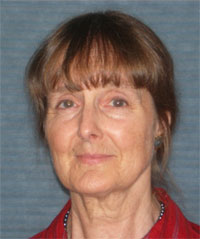Newsroom Archive
 Professor Joan Hoffman in the Department of Economics explores prospects for achieving sustainable development by analyzing the successes and weaknesses of the New York City’s internationally famous watershed collaboration in her book, The Cooperation Challenge Of The Economics Of Protecting our Water Supplies: Including A Case Study Of The New York City Watershed Collaboration, published by Routledge.
Professor Joan Hoffman in the Department of Economics explores prospects for achieving sustainable development by analyzing the successes and weaknesses of the New York City’s internationally famous watershed collaboration in her book, The Cooperation Challenge Of The Economics Of Protecting our Water Supplies: Including A Case Study Of The New York City Watershed Collaboration, published by Routledge.
“I was becoming increasingly aware of our problems with sustainability on the planet and as I learned about the City’s watershed agreement I understood that it was a limited experiment in sustainability. Upstate communities were being asked to shape their economies to be compatible with leaving nature’s services intact for the protection of the City’s water supply. Integrating our economic and environmental needs is at the heart of our sustainability challenge. I decided to learn what did and did not work in this collaboration because I thought the human race would need those lessons,” said Hoffman.
Hoffman, who is a professor in the new Economics major, has been a longtime activist for environmental issues at the College and has spearheaded the development of an interdisciplinary minor in Sustainability and Environmental Justice, which will be offered at John Jay in the coming year. Hoffman notes that this minor will fill a gap in education on the increasingly important sustainability and environmental justice issues, such as those surrounding the recent superstorm Sandy, and contribute to fulfilling John Jay’s mission and core values. Some of the courses to be offered in this interdisciplinary minor include an introductory course, courses in environmental ethics, justice, science, crime, and sociology and, in economics, sustainability, preserving the human habitat. Other courses, such as environmental racism are under development.
The Watershed Agreement was established in 1997 between New York City agencies, the upstate communities, the U.S. Environmental Protection Agency and other federal agencies, the New York State Department of Environmental Conservation (DEC) and other state agencies, and members of the environmental community to protect the country’s largest unfiltered drinking water supply: New York City Drinking Water supply system.
 “One factor that contributed to Collaboration effectiveness was the commitment of participants from both the City and upstate towns to their work and communities. They had varied work such as town supervisors, water research, management of City community relations, and education, they therefore had differences in information, perspective and responsibilities so that conflicts arose and collaboration was necessary. Collaboration was supported by the fact that all participants, whatever their differences, use the local water and want it to be plentiful and clean,” said Hoffman.
“One factor that contributed to Collaboration effectiveness was the commitment of participants from both the City and upstate towns to their work and communities. They had varied work such as town supervisors, water research, management of City community relations, and education, they therefore had differences in information, perspective and responsibilities so that conflicts arose and collaboration was necessary. Collaboration was supported by the fact that all participants, whatever their differences, use the local water and want it to be plentiful and clean,” said Hoffman.
Hoffman said that other beneficial factors included the City’s expenditure on research, payment to upstate communities for their stewardship of nature’s water protection services, allocation of some implementation to local communities through voluntary agreements and local non-profits, mechanisms for local community input, and the fact the agreement existed within a legal framework allowing participants to take their complaints to court.
Professor Hoffman’s book can be purchased here.
 Inside JJC (Faculty & Staff)
Inside JJC (Faculty & Staff) Technology Services Status
Technology Services Status

